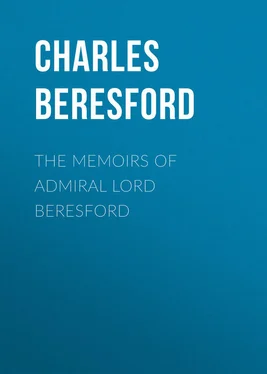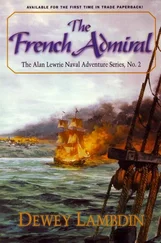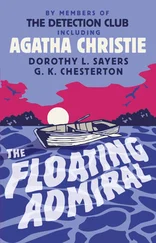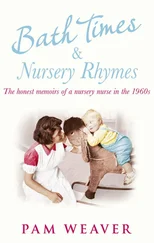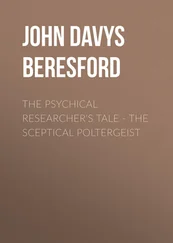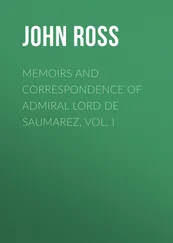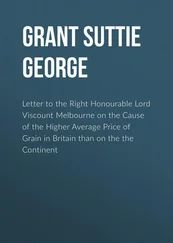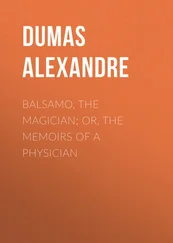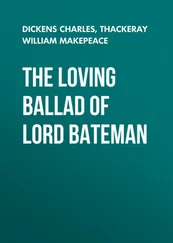Charles Beresford - The Memoirs of Admiral Lord Beresford
Здесь есть возможность читать онлайн «Charles Beresford - The Memoirs of Admiral Lord Beresford» — ознакомительный отрывок электронной книги совершенно бесплатно, а после прочтения отрывка купить полную версию. В некоторых случаях можно слушать аудио, скачать через торрент в формате fb2 и присутствует краткое содержание. Жанр: foreign_antique, foreign_prose, на английском языке. Описание произведения, (предисловие) а так же отзывы посетителей доступны на портале библиотеки ЛибКат.
- Название:The Memoirs of Admiral Lord Beresford
- Автор:
- Жанр:
- Год:неизвестен
- ISBN:нет данных
- Рейтинг книги:5 / 5. Голосов: 1
-
Избранное:Добавить в избранное
- Отзывы:
-
Ваша оценка:
- 100
- 1
- 2
- 3
- 4
- 5
The Memoirs of Admiral Lord Beresford: краткое содержание, описание и аннотация
Предлагаем к чтению аннотацию, описание, краткое содержание или предисловие (зависит от того, что написал сам автор книги «The Memoirs of Admiral Lord Beresford»). Если вы не нашли необходимую информацию о книге — напишите в комментариях, мы постараемся отыскать её.
The Memoirs of Admiral Lord Beresford — читать онлайн ознакомительный отрывок
Ниже представлен текст книги, разбитый по страницам. Система сохранения места последней прочитанной страницы, позволяет с удобством читать онлайн бесплатно книгу «The Memoirs of Admiral Lord Beresford», без необходимости каждый раз заново искать на чём Вы остановились. Поставьте закладку, и сможете в любой момент перейти на страницу, на которой закончили чтение.
Интервал:
Закладка:
The Pohers seem to have come to England with Duke William of Normandy, called the Conqueror. In 1066 they are found in Devonshire; and later, in Leicestershire, Northamptonshire, Shropshire, Warwickshire, Gloucestershire, Wiltshire, Herefordshire; a fructuous and an acquisitive clan. They came to Ireland in the reign of the second Henry: then came Sir Robert, Sir Roger, William and Simon. Sir Roger helped in the invasion of Ulster. But the founder of the De la Poers of Curraghmore was Sir Robert, who, in the year 1172, accompanied King Henry II. as Knight Marshal, and to whom was given by the King, the town of Waterford and a great parcel of county Waterford.
Towards the end of the sixteenth century, Sir Henry Sidney, in the course of his account of the province of Munster, communicated to the Lords of the Council, describes his visit to John, Lord le Poer, who was born in 1527. "27th Feb., 1575. The day I departed from Waterford I lodged that night at Curraghmore, the house that Lord Power is baron of, where I was so used, and with such plenty and good order entertained (as adding to it the quiet of all the country adjoining, by the people called Power country, for that surname has been since the beginning of the Englishman's planting inhabitants there), it may be well compared with the best ordered country in the English Pale. And the Lord of the country, though he be of scope of ground a far less territory than his neighbour is, yet he lives in show far more honourably and plentifully than he or any other, whatsoever he be, of his calling that lives in his province."
The "Peerage of Ireland" of 1768 urbanely observes: "It is very remarkable, that in so long a succession in this family, and in a country continually disturbed and torn by rebellion and civil wars, that not one of this family was ever engaged in any rebellion against the crown of England, nor was there ever a forfeiture in the family during the space of six hundred years that they have been planted in Ireland; and they at this day enjoy the family lands, and reside at the same place they were originally settled in, in the county of Waterford. In a grant of letters patent from King Charles II. to this Richard, Lord la Poer, bearing date the 9th May, the twenty-third year of his reign, there is this recital. That the ancestors of the said Richard, Lord la Poer, from their first planting in Ireland, for above four hundred years, had entirely preserved their faith and loyalty to the crown of England, in consideration therefore," etc.
Sir Tristram Beresford, up in the North, fought against King James Second; but the De la Poers harboured that monarch; who in the course of his retreat from Ireland, slept a night at Curraghmore, and departing thence took ship at Waterford, and was no more seen in Erin.
Sir Marcus, the son of Sir Tristram, as above recited, united the two houses by marrying the Lady Katherine le Poer; and their descendants, as in 1768, "at this day enjoy the family lands and reside at the same place they were originally settled in." The earldom of Tyrone, which was extinguished by the death of Lady Katherine's father, the third Earl, was revived in Sir Marcus Beresford. Tracing back the direct line of the De la Poers of Curraghmore, we find that Nicholas de la Poer was summoned to Parliament in 1375, in 1378, and in 1383, by the most ancient writs contained in the Rolls Office in Ireland. This Sir Nicholas of Curraghmore traced his descent from Brian Boru, King of Erin, who died in 1014. The line of Irish Kings (as recorded in Whitaker's Almanack ) goes back to A.D. 4; and some say much further.
A collateral branch of the De Pohers, or Powers, was the Barons of Donoyle, or Dunhill, the ruins of whose castle remain to this day. It was stoutly defended against Cromwell by the Baroness; and, according to tradition, was betrayed into the hands of the enemy by the lieutenant of her garrison. These Powers were then transplanted to Connaught, and their estates were forfeited. Another collateral branch was the Powers of Knockbrit, county Tipperary. In the year 1789, to Edmund Power and his wife, who was a daughter of "Buck" Sheehy, was born Marguerite, who became Lady Blessington. It seems that her father, "Buck" Power, dissipated his fortune, as the mode was in those days; that he compelled his daughter to marry one Captain Farmer, who ill-treated her; that Mrs. Farmer left her husband, came to London with her brother, was painted by Sir Thomas Lawrence, and, after Farmer's death, married Lord Blessington. Here is a link with my Lord Byron.
The relation of the De la Poer Beresfords with the Delavals of Seaton-Delaval in Northumberland, consists in the marriage of Sir Henry de la Poer, second Marquess (1772-1826), with Lady Susanna Carpenter, who was the granddaughter of Lord Delaval. Her mother, daughter of Lord Delaval, married George, second Earl of Tyrconnel. The Lady Tyrconnel was famed for her beauty. The portrait of her daughter, Lady Susanna, now at Curraghmore, represents a singularly beautiful, fair-haired creature, delicately featured, blue-eyed. The Delavals would seem to have been a high-spirited, reckless, and spendthrift race. Extravagant entertainments were devised at their house of Seaton-Delaval, which was built by Sir John Vanbrugh, playwright and architect. The actor Foote was a friend of the family; they were devoted to amateur theatricals; and Garrick once lent Drury Lane Theatre to them. The Delavals were singularly addicted to practical jokes; a tendency to the same diversion has reappeared in later generations. Lord Delaval's only son died young, and the title expired. There is a picture of the sturdy, brown-haired lad at Curraghmore. It is worth noting that an ancestor of Lady Susanna, and, therefore, of Lord Charles Beresford, was a naval officer of some distinction. George Delaval, vice-admiral of the Red, was present at the action fought off Cape Barfleur in May 1692.
The generation of the second Marquess, he who married the Lady Susanna, produced an Archbishop: even the Right Honourable and Most Reverend Lord John George de la Poer Beresford, Archbishop of Armagh and Primate of all Ireland. He was born in 1773, and died in 1862. Possessing great wealth, he was known for his immense benefactions. He gave largely to Dublin University, and to the College of Saint Columba; restored the Cathedral at Armagh at a cost of £30,000; and augmented the salaries of his clergy. The bust of this magnificent prelate stands in the private chapel at Curraghmore. His body is interred in Armagh Cathedral. The Archbishop bequeathed his Property in county Cavan to Lord Charles Beresford; the townlands on the estate bearing such euphonious names as Ballyheady, Corraleehan Beg, Crockawaddy, Kiltynaskeelan, Derrynacrieve, Gubnagree, Scrabby, Tullynamoultra.
The third Marquess, Sir Henry de la Poer, having met his death in the hunting-field, was succeeded in 1859 by his brother, Sir John, who was Dean and Prebendary of Mullaghbrack, in the Arch-diocese of Armagh. He married, in 1843, Christina Leslie, daughter of Charles Powell-Leslie. She was born in 1820, and lived until 1905. The Marchioness learned to ride when she was between forty and fifty years of age, and speedily became a noted rider to hounds. Their sons, as before recited, were Sir John-Henry de la Poer, fifth Marquess of Waterford; Lord Charles, Lord William, Lord Marcus, and Lord Delaval; of whom Lord Charles and Lord Marcus survive at the time of writing. Lord Charles was born on 10th February 1846 at Philipstown Glebe, Louth. It was the year of the great famine; and at Curraghmore, half a regiment was then quartered in the house.
The fifth Marquess, elder brother of Lord Charles, was succeeded in 1895 by his son, nephew to Lord Charles. The sixth Marquess lost his life by a sad accident in 1911. The present heir is a minor.
In this chronicle, brief as it is, three notable figures cannot be omitted: Mr. Commissioner John Beresford, Admiral Sir John Poo Beresford, and the Marshal. (For information concerning these worthies, I have drawn upon the Dictionary of National Biography .)
Читать дальшеИнтервал:
Закладка:
Похожие книги на «The Memoirs of Admiral Lord Beresford»
Представляем Вашему вниманию похожие книги на «The Memoirs of Admiral Lord Beresford» списком для выбора. Мы отобрали схожую по названию и смыслу литературу в надежде предоставить читателям больше вариантов отыскать новые, интересные, ещё непрочитанные произведения.
Обсуждение, отзывы о книге «The Memoirs of Admiral Lord Beresford» и просто собственные мнения читателей. Оставьте ваши комментарии, напишите, что Вы думаете о произведении, его смысле или главных героях. Укажите что конкретно понравилось, а что нет, и почему Вы так считаете.
